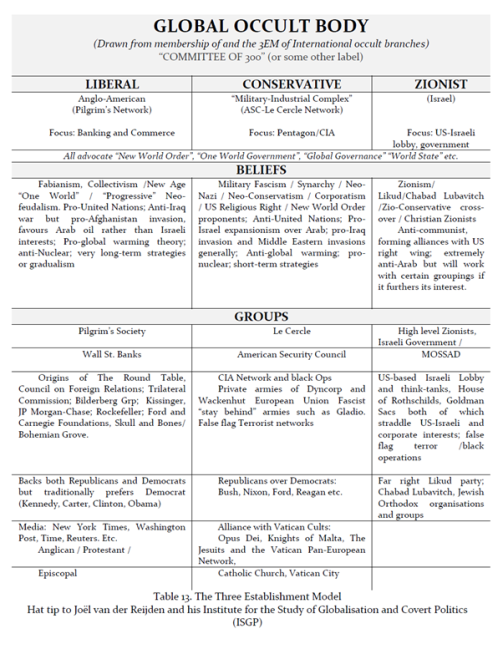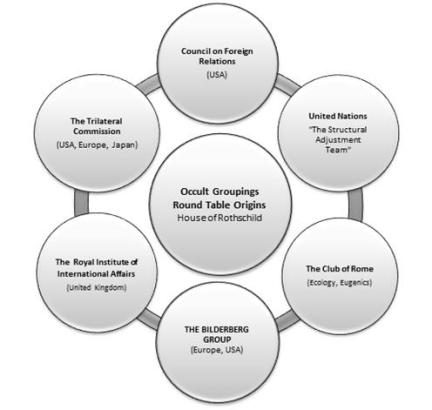“If you control oil, you control nations. If you control food, you control people.”
– Henry Kissinger
 “Food is power! We use it to change behaviour. Some may call that bribery. We do not apologize.” So said past Executive Director of the United Nations World Food Program, Catherine Bertini.
“Food is power! We use it to change behaviour. Some may call that bribery. We do not apologize.” So said past Executive Director of the United Nations World Food Program, Catherine Bertini.
One can imagine that humility may be very low down on the list of qualities for a person voted “the most powerful woman in the world” by The Times of London newspaper in 1996. And by a spooky quirk of fate, Bertini is also a member of the Advisory Council at Rockefeller College on Public Affairs and Policy, Trilateral Commission, Council on Foreign Relations and a Senior Fellow of the Rockefeller supported by the Bill & Melinda Gates foundation. If her Elite membership doesn’t tell you all you need to know from the outset then her mentor Henry Kissinger will place her remarks in context.
One of a number of Elite pensioners who seem to live forever while avoiding any kind of accountability for their crimes, Kissinger is one of the most reviled and revered elder Statesman who has never left the political game. CEO of Kissinger Associates, a member of the Council on Foreign Relations, Trilateral Commission and a long-time Bilderberger, he is the public face of those who prefer to remain out of the spotlight. He has strong ties to the Royal Institute of International Affairs (RIIA), JP Morgan Chase Bank, the Rockefeller Foundation and is international advisor to the Hollinger Group. He has held many public office positions including Head of the State Department and National Security Council under Nixon in the late 1960s and early 70s. He received the Noble Peace Prize in 1973 despite being instrumental in creating the Vietnam and Yom Kippur war between Egypt / Syria and Israel.

Kissinger 1971 (wikipedia)
Kissinger’s presence has been around like a persistent stain on the carpet of US geo-politics since the 1950s and no matter what truth rises to the surface, the old man still appears on T.V. shows and gives authoritative interviews despite volumes of evidence for his crimes including conspiracy to commit murder, kidnap, alleged child rape and torture. He encouraged the Kurds to take up arms against Saddam Hussein in 1972-75 and then abandoned them to a slow death; his participation in the promotion of South African apartheid; the destabilisation of Angola; the whitewashing of Central American death-squads; political protection for the Pahlavi dynasty in Iran and its system of torture and repression; the genocide of civilian populations in Indochina; the planning of the coup in Chile and the assassination of democratically elected President Salvador Allende and many other crimes extending to Bangladesh, Cyprus, East Timor, and Washington, D.C.
So, it was fitting that Kissinger would continue his crimes undetected by coming up with the policy to use food as a weapon. [1]
On Dec. 10, 1974, a 200 page classified study (later de-classified in the 1990s) was completed by the US National Security Council called: “National Security Study Memorandum 200: Implications of Worldwide Population Growth for U.S. Security and Overseas Interests.” Overseen by Kissinger, it landed on his desk for review and then on to President General Ford to be adopted as official policy in 1975. The basic thrust of the study followed the same Malthusian line that population growth in developing countries was a threat to US National Security and therefore had to be curbed by overt and covert means. The former was to be birth control and the latter, the creation of war and famine. It just happened to neatly coincide with political and strategic interests which were underway in countries that were chosen for depopulation. These included: India, Bangladesh, Pakistan, Indonesia, Thailand, the Philippines, Turkey, Nigeria, Egypt, Mexico, Brazil and Colombia. The power status of each of these countries could not be allowed to exceed the level that would put US interests at risk. The report stated: “Already the most populous country on the continent, with an estimated 55 million people in 1970, Nigeria’s population by the end of this century is projected to number 135 million. This suggests a growing political and strategic role for Nigeria, at least in Africa.” [2] Which certainly wouldn’t do since America had grand plans for an unimpeded resource grab. US economic dominance and population control strategies converge in the following paragraph:
The U.S. economy will require large and increasing amounts of minerals from abroad, especially from less developed countries [see National Commission on Materials Policy, Towards a National Materials Policy: Basic Data and Issues, April 1972]. That fact gives the U.S. enhanced interest in the political, economic, and social stability of the supplying countries. Wherever a lessening of population pressures through reduced birth rates can increase the prospects for such stability, population policy becomes relevant to resource supplies and to the economic interests of the United States … [3] [Emphasis mine]
Many, if not most of the problems now experienced in the developing world are a direct result of Western economic policy. Rockefeller Foundation, Planned Parenthood International and others were still busy in India pushing through birth control policies under threat of economic sanctions just as Kissinger was suggesting to withhold food supplies unless mass birth control became standard practice:
“There is also some established precedent for taking account of family planning performance in appraisal of assistance requirements by AID [U.S. Agency for International Development] and consultative groups. Since population growth is a major determinant of increases in food demand, allocation of scarce PL 480 resources should take account of what steps a country is taking in population control as well as food production. In these sensitive relations, however, it is important in style as well as substance to avoid the appearance of coercion.” [4]
Spoken like a true Machiavellian. He continued:
“Mandatory programs may be needed and we should be considering these possibilities now,” adding: “Would food be considered an instrument of national power? … Is the U.S. prepared to accept food rationing to help people who can’t/won’t control their population growth?” [5]
It was only in the late 1980’s that the Brazilian Ministry of Health began investigating reports of systematic sterilisation of Brazilian women and was amazed to find that: “… an estimated 44 percent of all Brazilian women aged between 14 and 55 had been permanently sterilized,” while older women had been sterilized fourteen years before at the start of the program. As they pursued their investigations various American and some Brazilian organisations and agencies were found to be involved including the US Pathfinder Fund, International Planned Parenthood Federation, the Association for Voluntary Surgical Contraception, Family Health International – all under the guiding hand of the US Agency for International Development (USAID). [6]
The NSSM 200 study allowed what was essentially a eugenics-based National Security policy for depopulation to secretly develop in third world countries enhancing and expanding the work already carried out by Rockefeller minions twenty years before. Using euphemisms such as “family planning” and “population explosion” the propaganda of imminent population growth tied to the availability of strategic minerals could advance world Establishment designs in a way that had not been possible before the Nixon-Kissinger double act.
Author on geopolitics F. William Engdahl wrote from his 2007 book Seeds of Destruction:
While arguing for reducing global population growth by 500 million people by the year 2000, Kissinger noted elsewhere in his report that the population problem was already causing 10 million deaths yearly. In short he advocated doubling the death rate to at least 20 million, in the name of addressing the problem of deaths due to lack of sufficient food. The public would be led to believe that the new policy, at least what would be made public, was a positive one. In the strict definition of the UN Convention of 1948, it was genocide. […]
Kissinger was, in effect, a hired hand within the Government, but not hired by a mere President of the United States. He was hired to act and negotiate on behalf of the most powerful family within the post-war US establishment at the time — the Rockefellers. [7]
The Rockefeller Foundation had already established itself as part of the factions behind post war Washington policy where oil, defence and global agriculture were all integral to the expansion of American hegemony. Or in Kissinger’s words: “If you control oil, you control nations. If you control food, you control people.” [8]
Food as a weapon is nothing new but the consolidation of this tactic has reached a degree of technological sophistication not seen for hundreds of years. By 1974, the biggest six companies controlling 95 percent of world food were (and still are) Cargill, Continental, Louis Dreyfus, Bunge, André, and Archer Daniels, Midland / Töpfer all of whom are spawned from an Anglo-Dutch-Swiss food cartel, though all based in the US.
Under the rationale of “efficiency” and “maximizing profit ratios” US agriculture policy drove hundreds of thousands of family farmers into bankruptcy in order to pave the way for the monolithic machine of agribusiness, where the remaining farmers would exist only as serfs to trans-national corporations’ production methods. William Pearce, Cargill’s vice-president of Public Affairs was instrumental in this domination. He was on President Nixon’s 1974 Committee for Economic Development and made sure that US trade policy would leave a clear run for American agrichemical business to monopolize the world market in seeds, pesticides and most importantly, genetically modified plants. From that moment on, corporations like Cargill and Archer Daniels would not only reorganize farming policy but work to create a new one.

Cargill food giant logo
All legislation regarding family farm protections were phased out in favour of a rapidly deregulated “free market.” Just like the 2008 financial warfare perpetrated by Goldman Sacs et al and the federally mandated use of billions of dollars of taxpayers’ money in bailouts, so too Nixon’s farming policy was to change the face of America and the very nature of food. Wall St. only saw dollar signs as the social fabric of farming was torn apart.
The net result of such a systematic grab for power meant that Third World countries were especially vulnerable to these predator corporations who wanted to divert all self-sufficient and sustainable operations into a long-distance relationship of dependency where only fruits, sugar, coffee and vegetables would feature. US grains and other products were offered in return for payment by exporting their fruit and vegetables. This was to be the open door to massive worker exploitation and the loss of domestic food production. It was to signal the arrival of huge fields with cheaper yields dependent on a host of chemical products while the local and often ancient farming practices either instantly died or were absorbed into mechanised and synthetic “efficiency.”
Rather than ensuring that local farmers could provide for their communities by planting high-protein/high calorie crops and even sell the excess abroad at competitive prices, corporations oversaw the rise of a New World of poverty and its underclass, comprehensively denying them the assistance and ability to become self-sufficient in a monopoly that was both ecologically damaging as it was extraordinarily myopic. Cheap imports devalued their economies whilst access to their land was denied. Ensuring healthy, local economies could prosper was never the objective of American agri-business. Exploitation and ruthless stripping of the land, culture and people was the only way forward to ensure maximum profits divorced from limitations, morals and values.
The infamous General Agreement on Tariffs and Trade (GATT) underwent several incarnations before finally being replaced with the World Trade Organization (WTO) in 1993, fully operational by 1995. During President Richard Nixon’s tenure and through the auspices of the GATT Toyko round he was able to give carte blanche to the new global agribusiness export agenda while ensuring that developing countries would never gain their own independent food production. Nixon proposed to Congress a new way of managing trade negotiations which were termed “fast track”, for which Congress had to vote “yes” or “no” on a particular trade agreement. All changes to U.S. law had to conform to its terms – without any amendments. This was typical of the Kissinger-Nixon tag team. Under fast track, not only had Congress to conduct a vote within a brief 60 to 90 days of the President’s submission of the agreement, but the subsequent debate had to be limited to 20 hours.
As Congress was effectively removed from the negotiation process this opened the way for Nixon’s idea for a system of advisory groups and think-tanks drawn from the private sector. These appointed groups have enormous power and influence. Closed to public scrutiny, the documents are confidential with security clearances in operation for representatives. Indeed, the documents themselves are virtually unreadable to any but the initiated. Independent presidential candidate and social activist Ralph Nader wrote: “Once the agreements are completed – or on those rare occasions when a draft of the agreements is “liberated” – any person who wants to figure out what the agreements say faces a Herculean task. The agreements are very complex and written in arcane, almost impenetrable technical jargon that bears only a passing resemblance to the English language.” [9]

Puppets & players on a mission: Richard Nixon and Henry Kissinger 1972
This obfuscation is intentional. The last thing the high priests of unfettered corporatism want is for the public, media or any democratic body casting a curious eye over agreements which are inherently anti-human. The big transnational food corporations intend to keep the public ignorant of trade agreements and excluded from the approval process as they know full well that if they were cross-examined the practices would be seen for what they are – a product of unrestrained, cartel capitalism.
What is perhaps the most dangerous development is the use of genetically modified foodstuffs under the pretext of feeding the world’s poor which were made poor by the very same entities and for that very same purpose.
The success of the WTO was mainly down to the Cargill Corporation’s aggressive lobbying of Congress (otherwise known as mass-bribing) through the auspices of the influential Business Round Table group (An off-shoot of the Round Table of European Industrialists) which is an alliance of corporatists pushing for total deregulation of trade. In other words, limitless exploitation of the world’s resources without national borders or bureaucracy. This lobbying took the form of a WTO paper entitled: “The WTO Agreement on Agriculture” which was penned by a gaggle of corporate plunderers such as Cargill, Monsanto, DuPont, Nestlé, Unilever, and others. [10]Most of these companies had many thousands of patents on new trans-genic plants. It was to be a perfect platform for GMO companies like Monsanto, Dow AgroSciences, and Syngenta to merge their monocultures towards the 4Cs: commercialisation, consolidation and centralisation leading to absolute control of the world’s food and its destiny.
The WTO’s remit was to be primarily a global free trade enforcer, a supranational entity fuelled by the insatiable drive of agribusiness and therefore answerable only to private agribusiness companies. Lip-service was paid to the plaintive cries for accountability because it had real power compared to the less efficient GATT agreements of the past. That usually means if the socio-economic and GMO order is not adhered to, the WTO can levy financial penalties to keep countries in line with the agribusiness agenda. For that reason, the WTO was designed to be above the laws of nations, answerable to no public body beyond its own walls. As we shall see presently, this organisation was to be used as the primary means by which genetically modified food and crops would become dominant in the world agriculture market.
By the time the 1986 Uruguay round of GATT talks had arrived and after a successful dismantling of public health and safety provisions in the US and the onset of rapid financial deregulation care of the Reagan and Clinton Administrations, agribusiness was primed to road test its new WTO toy. World cereals and grain supplies, meat, dairy, edible oils and fats, sugar, fruits and vegetables and all forms of spices are controlled by these corporations which operate as a food cartel working in tandem with the various principles of World State visionaries. They can apply enormous pressure to the West and developing countries. In combination with financial warfare and the “shock doctrine”of the World Bank and IMF, infrastructure support and capital goods are routinely denied and so too the possibility for self-reliance and self-sufficiency if a country doesn’t wish to play the game of cartel economics.
Thanks to historic monopolies forged in the dim and distant past these corporations have had a progressively ruthless stranglehold on much of the third world. Most countries don’t have any choice but to import from the food cartel’s export regions or see their populations starve. The shocking disappearance of thousands of global farmers is testament to the power of the food cartel and the crucial part they play in the 4Cs. $90 million in grants for molecular biology and genetic research were dispensed by the Rockefeller Foundation between 1932 -1957, excited at the prospect of seeing their passion for social engineering bolstered by these new fields of science. For the Rockefellers, eugenics was about to become turbo-charged with much greater advances in manipulating the human mind and body.

10 Scientific Studies Proving GMOs Can Be Harmful To Human Health
With the Rockefeller Foundation’s well-established web of micro-biologists and bio-technicians spanning the globe the next war against natural food and human health of the most vulnerable was to proceed. On December 9, 1959, with some extra support from the Ford Foundation and the Philippines government, the Rockefeller’s International Rice Research Institute (IRRI) was established. The Institute’s research headquarters are located on the University of the Philippines campus in Los Baos, south of the Philippine capital, Manila, the largest non-profit agricultural research centre in Asia. With offices in 11 other countries, agricultural research institutes, international development agencies, and philanthropic organisations recently celebrated its 50th anniversary with much back slapping and congratulations by the Bill & Melinda Gates Foundation who have continued to support its work with hefty donations.
With close ties to business, government and biotech industries in the Philippines, the Manila bulletin gushes about the influence of the Institute and lays out the philanthropic Rockefeller script we’ve come to know so well: “In the 50 years of IRRI, the institute’s work has helped feed much of the world’s population, reduce poverty and hunger, improve the health of rice farmers and consumers, and ensure that rice production is environmentally sustainable. IRRI’s high-yielding rice varieties have helped significantly increase world rice production, especially in Asia, saving millions from famine while protecting the environment and training thousands of researchers.” [11]
In fact, the above quote is a woeful misrepresentation of the big picture riding on the assumption that global monoculture farming methods have been a grand success for all concerned, rather than the obvious ecological and social disaster they truly are. Yet, still the Rockefeller Foundation and its enormous corporate and civil society connections thrives on its perceived innovation and philanthropy. The IRRI is major player in the corporate take-over of Asia and its food. Sustainability and assisting sections of the population living in poverty is just another cynical ruse, though many of those employed by these companies no doubt want to believe the fantasy.
Over several decades IRRI has genetically modified over 300 High Yielding Varieties (HYVs) and as Dr Richard Hindmarsh of the University of Queensland points out, prior to such attempts to improve on nature over 100,000 different rice varieties thrived in farmers’ fields. [12] Yet once agribusiness technology tore into natural crop diversity and the ecological balance which existed then it was not long before the natural varieties became extinct, often without seed documentation or collection. Once a monoculture dominates, their genetic uniformity is inherently weaker with increasing vulnerability to disease, pest invasions, biological stress and weed proliferation due to intensive fertiliser use. Intensive farming becomes a false economy since it cannot exist without the inflow of high quantities of pesticides, herbicides and the deployment of massive irrigation projects, all of which destroy communities and eventually the land.
 Regarding the PR of high yields of rice, with expanding irrigated land and large-scale chemical fertiliser use, IRRI claims that there was significant increase from 2.3 percent per annum before 1964 to 4.5 percent between 1965 and 1980. However, as the Food Security Fact Sheet states, IRRI rice yields at their research farm actually decreased: “… at a rate of 1.25 percent per year from 1966 to 1987, a decline of 27.5 percent in 21 years. From 1966 to 1980, the yield from a variety named IR8 fell from 9.5 tons per hectare to about 2 tons per hectare while still receiving 120 kilograms of pure nitrogen fertilizer per hectare. Yet by 1990, IR8 and similar varieties were planted on about 80 percent of Philippine rice crop area.” [13]
Regarding the PR of high yields of rice, with expanding irrigated land and large-scale chemical fertiliser use, IRRI claims that there was significant increase from 2.3 percent per annum before 1964 to 4.5 percent between 1965 and 1980. However, as the Food Security Fact Sheet states, IRRI rice yields at their research farm actually decreased: “… at a rate of 1.25 percent per year from 1966 to 1987, a decline of 27.5 percent in 21 years. From 1966 to 1980, the yield from a variety named IR8 fell from 9.5 tons per hectare to about 2 tons per hectare while still receiving 120 kilograms of pure nitrogen fertilizer per hectare. Yet by 1990, IR8 and similar varieties were planted on about 80 percent of Philippine rice crop area.” [13]
Foundations and NGOs lay the groundwork for a new colonisation under the mantle of philanthropy, which is why IRRI’s annual reports from 1963-1982 show grants from a multitude of US and European chemical corporations from such as Monsanto, Shell Chemical, Union Carbide Asia, Bayer Philippines, Eli Lilly, Occidental Chemical, Ciba Geigy (later part of Novartis Seeds / Syngenta), Chevron Chemical, Upjohn, Hoechst, and Cyanamid Far East. [14] With bio-safety and regulatory frameworks still to be implemented or reinstated, this new form of monopoly is set to continue regardless of the consequences to ordinary people on the ground. Even IRRI’s host country the Philippines, has been importing increasing amounts of rice every year despite following IRRI’s programs with religious conviction. This is in part caused by geography and climate but the heavy use of insecticide and the resultant poor soil content also caused financial and health-related health problems for farmers, the effects of which were inevitably passed onto consumers.
Marketed and promoted by the Rockefeller and Ford Foundations and their bid to gain control over the world’s rice supply and replace it with GM varieties, the IRRI was a big player in riding the mythological wave of this “Green Revolution” and the tag-line of “solving the world’s hunger problem.” A concentrated effort to neglect indigenous rice varieties with a proven high yield was put into action as the start of a multi-pronged campaign to push the developing world into the palm of biotechnology. [15] The IRRI; the United Nations Food and Agriculture Organisation; UN development Program; the World Bank and several other environmental and agribusiness organisations formed a global steering Group on International Agriculture Research (CGIAR) established in 1972. The much vaunted “success” of this Green Revolution was given a major thumb’s down by Philippines’ famers during a CGIAR Annual General Meeting in 2002 near the offices of IRRI. Demonstrations and street protests called for both institutions to be dismantled with statements decrying the record of the IRRI and CGIAR believing them to be “failed research institutions.” Farmers made it clear that they believed: “… a genuine, farmer-centred research institution should develop technologies that shall liberate farmers from dependence on any agro-chemical TNC [Trans-National Corp.] promote sustainable agriculture, conserve the environment, and protect the health of farmers.” [16]
One of the world’s leading experts on rice science Dr. R.H. Richaria, has been warning of the real nature of the “Green Revolution” since the 1980s. His concern over the severe disturbance of the agro-ecological balance has led to: “… intensive use of inputs such as genetically uniform seeds, fertilisers, pesticides, and water and energy, [which] certainly resulted in major environmental degradation, including salinity, soil erosion, desertification, chemical pollution of land and waterways, die-back, loss of crop diversity, and the turning of renewable resources, such as soil and water, into non-renewable resources.” [17]

Source: ‘Issues Surrounding Genetically Modified (GM) Products’ by Subhuti Dharmananda, Ph.D., Director, Institute for Traditional Medicine, Portland, Oregon
The global farming revolution was part of an ambitious strategy to steer the world from agriculture towards agribusiness, with an exclusively GM-centred production line. A global concentration of hybrid seed patents would be in the hands of just a few seed companies. The in-built sell-by-date of these GM seeds meant that farmers were forced into a modern-day form of bonded labour from which it is almost impossible to escape.
The creation of vast tracts of land for the planting GM crops displaced many peasant families and communities who wound up in in the poorest parts of cities and therefore vulnerable to exploitation by those same companies who were always on the look-out for cheap labour. Moreover, developing nations were forced into debt to pay for the expensive technology that produced initially high yields only to rapidly fade in the middle to long-term thus becoming the hook to purchase more and more “add-ons” to sustain the fertility of soil and crops. Those who could not afford it had to borrow the money but with interest rates so high many peasant farmers lost their farms (and generations of farming history) to larger land-owners sponsored by trans-national companies. World Bank loans were easily extended while the banking cartels quite literally, had a field day.
The main task of CGIAR was to achieve excellence in the field of agronomy and agricultural science in general and to apply monoculture production back in the US and the developing world. From that blitzkrieg it laid the foundation for the “Green Revolution” which was in fact the pretext for the “Gene Revolution” and the distribution of GMO-based farming, riding on the wave of a deregulated free market. It followed the same 4Cs formula as John D. Rockefeller’s Standard Oil where the once the seed was planted and in the right way, it was just a matter of time before the planter could monopolise the whole garden and control the parameters of production so that they serve multiple objectives benefiting only the “Master.” Once families like the Rockefellers controlled the food supply they were able to extend their reach over a hundreds of companies and their subsidiaries in the supply line, from petroleum and agrichemicals to irrigation projects and food aid.
Behind this façade of helping the world’s poor quite apart from the obvious ecological and health dangers Rockefellers’ remit is to introduce the science of eugenics (social biology, Planned Parenthood etc.) through as many of societies’ domains as it can. Genetic modification of food is one such important spoke in the wheel. The food chain would be under corporate control matching the aspirations underpinning the human genome program.
Using the banner of a Green Revolution, the agri-chemical business has expanded into Africa courtesy of the Rockefellers and Bill & Melinda Gates foundation’s innocently named ‘The Alliance for a Green Revolution in Africa’ (AGRA). Its advisory board of directors is riddled with Rockefeller go-betweens such as Strive Masiyiwa, Board Chair (Rockefeller Foundation) Jeff Raikes, Co-Chair, Programs and Policy Committee, (Rockefeller Foundation); Judith Rodin, Co-Chair, Programs and Policy Committee (Rockefeller foundation); Akinwumi Adesina, Associate Director, (Rockefeller Foundation) Pamela K. Anderson, Director of the Agricultural Development Program, (Bill & Melinda Gates Foundation) [18]
Different name, same story.
Looking at the website you would be forgiven for thinking that so many happy, smiling faces denotes an agricultural future where all such agendas and drawbacks are fantasies of the pessimistic and deranged. Africans will be saved from their poverty by the goodness of a corporate West and their utopian world of hybrid seeds and high yields. That is, if you forget that a chemically saturated Africa and the diminishing returns of GM foods will mean that the long-term health and prosperity of Africa and its people is under question.
Amid the UN sex trafficking and abuse scandals Kofi Annan is no stranger to being used as an Establishment tool should the salary be sufficient. Annan’s job as Board Chair Emeritus of AGRA is to penetrate GM crops deep into the African heartland. Along with the geo-political shenanigans of AFRICOM, AGRA represents the same resource grabbing goals dressed up as agricultural emancipation. With the help of the World Bank, USAID, Monsanto, CGIAR member Syngenta AG of Switzerland, handsomely paid African scientists awash with sweeteners, incentives, sponsorships and initiatives, Africa’s governments are being seduced into accepting a New African Order of biotechnology.

The GM crop leaders are presently the United States, Canada, India, Argentina, Brazil, and China. 1996 – 2006 saw the biggest leap in the production of genetically modified foodstuffs and crops with new countries signing up including South Africa, Paraguay, Uruguay and Australia. The International Service for the Acquisition of Agri-biotech Applications (ISAAA) has stated that the world’s farmers planted 148m hectares of genetically modified crops in 29 countries in 2009. The USA is the leader in GM cultivation at 66.8m hectares over 2 million more than the previous year. [19]
Brazil’s economic boom (and inevitable bust sometime in the future) has meant that Genetically Modified Organisms have been included in the ascent with some 10m hectares planted since 2008 overtaking Argentina as the second-biggest grower in 2010. By 2011, that had reached 303,000 km2. [20] 50 percent of GM crops grown worldwide were grown in developing countries, with the largest increase in Brazil in the same year. There has also been rapid and continuing expansion of GM cotton varieties in India since 2002 (Cotton is a major source of vegetable cooking oil and animal feed) with 106,000 km2 of GM cotton harvested in India in 2011.
By 2004, global GM crop acreage had hit the 167 million mark. By 2010, Latin America had been breached with Mexico, Chile, Colombia, Honduras and Costa Rica all yielding an average of 0.1 million hectares. Negligible but present nonetheless. Asia and Latin America are providing many hectares set aside for GM crops and associated biotechnology. The rise in GM farming is likely to increase year by year on these continents and in the developing world.
Agri-business makes the idea of choice a pipe dream. Soyabean crops have wreaked ecological destruction on much of Latin America producing huge profits for invested companies. Soya and herbicide resistant crops remain the most popular products that farmers ending up needing once stuck on the monoculture system. GM crop production is still not popular with Europeans due to an ethical and environmental reasoning which has expressed itself through an organised activist movement at local and national levels. Europe is also subject to clear restrictions on growing GM crops. Nevertheless, creeping acreage is appearing with GM maize production having taken place in Spain, Portugal, Germany and France and more recently in the Czech Republic, Sweden, Poland, Slovakia and Romania, all with an average of 0.1 million hectares. [21]
As Africa is invaded by Chinese, European and American corporations, so too the potential for GMOs to hitch a ride. Burkino Faso and Egypt are the latest victims (or innovators depending on your position) with Pakistan, the newly and conveniently “liberated” Myanmar and the Philippines following closely behind. [22] Iran climbed aboard in 2005.
See also:
Redesigning Nature
Update: Big Biotech’s big lie: National sciences group concludes GMOs do not increase crop production
Notes
[1] ‘The Case Against Henry Kissinger Part One The making of a war criminal’ by Christopher Hitchens
Harpers magazine, March 2001. | http://harpers.org/archive/2001/02/the-case-against-henry-kissinger-2/
[2] National Security Study Memorandum 200: Implications of Worldwide Population Growth for U.S. Security and Overseas Interests (NSSM200) 1974.
[3] Ibid.
[4] ‘Kissinger’s 1974 Plan for Food Control Genocide,’ by Joseph Brewda, December 8, 1995 issue of Executive Intelligence Review.
[5] Ibid.
[6] op. cit. Engdahl (p.53)
[7] Ibid.
[8] Ibid. (p.41)
[9] ‘The Globalisation Agenda – Grave New World – The Democracy Grab’ by Ralph Nader and Lori Wallach from The Case Against the Global Economy and For a Turn Towards the Local by E. Goldsmith and Jerry Mander – Sierra Club Books, 1991.
[10] http://www.wto.org/english/docs_e/legal_e/14-ag_01_e.htm
[11] ‘International Rice Research Institute celebrates its 50th Anniversary’ December 9, 2009, Manilla Bulletin.
[12] http://www.panap.net/docs/analysis/gerice.pdf
[13] Rice, Trade and Biotechnology in the Philippines by Steve Suppan Food Security Fact Sheet No. 5, September 1996.
[14] ‘Laying the Molecular Foundations of GM Rice Across Asia’
[15] IRRI powerbase.info.
[16] ‘Richaria’s study proves deliberate neglect of indigenous varieties’ by Bharat Dogra Leisa India Supplement December 1999.
[17] IRRI powerbase.info. dismantal IRRI / CGIAR.
[18] http://www.agra-alliance.org/
[19] Ibid.
[20] ‘The adoption of genetically modified crops – Growth areas’ Feb 23rd 2011, The Economist online.| ‘ISAAA Brief 43, Global Status of Commercialized Biotech/GM Crops: 2011’ By James C (2011). ISAAA Briefs. Ithaca, New York: International Service for the Acquisition of Agri-biotech Applications (ISAAA).
[21] Op. cit. The Economist
[22] Ibid.


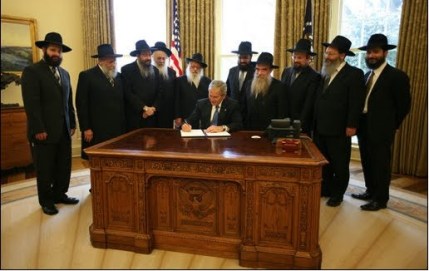

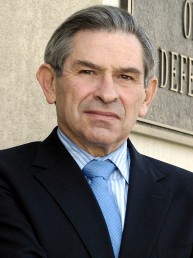

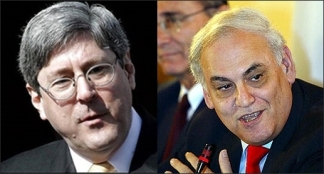






























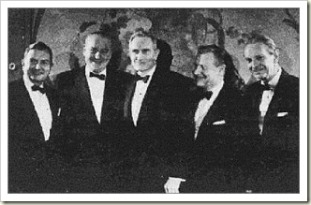

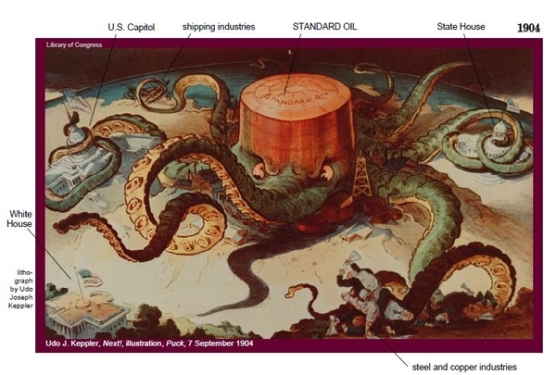
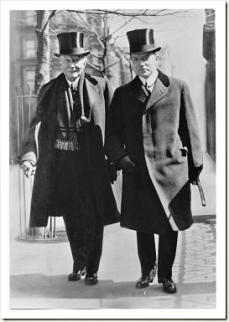
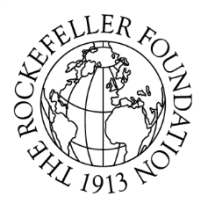

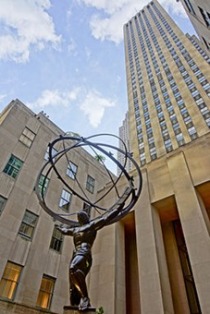
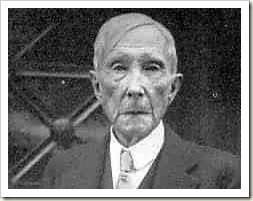

 Henry Kissinger: CEO Kissinger Associates, former National Security Advisor under Nixon and numerous political posts
Henry Kissinger: CEO Kissinger Associates, former National Security Advisor under Nixon and numerous political posts The late Lord Peter Carrington: Former Foreign Secretary Under Thatcher, Former NATO Secretary General, Former Pilgrims Society president
The late Lord Peter Carrington: Former Foreign Secretary Under Thatcher, Former NATO Secretary General, Former Pilgrims Society president George P. Schultz: Former US Secretary of State, CEO of Betchtel
George P. Schultz: Former US Secretary of State, CEO of Betchtel Frank Carlucci: Former CIA Deputy Director
Frank Carlucci: Former CIA Deputy Director
